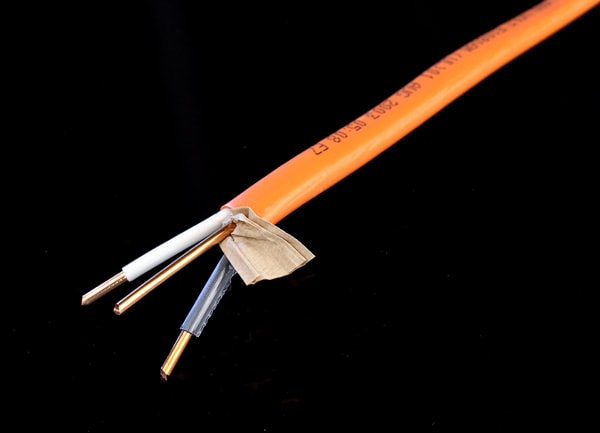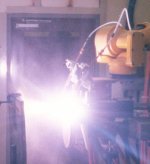It takes all kinds of people. Many will never do anything but a fair days work and get paid, accordingly. I remember working in such an environment back at the Ampex Audio department, in 1968. The head of the audio division noted my unusual interest in improving things, so he assigned me the task of finding out how we could improve existing audio products, and look toward the next generation of analog master recorders. I got heat and static from everybody. The tape head department just about went nuts when I showed them that the head stacks were made of too thick slices, and that the back gap was inappropriate. It meant more work for them to get it right. The same with fet input repro. stages, etc, etc.
Everyone told me that these SMALL changes were next to worthless, as Dolby could solve all our problems. My office mates continually badgered me about it.
It, over the course of years, came to be at Ampex Audio, that the heads were improved, the bias frequency increased, etc, etc. just like I put in my internal paper in early 1969 to department, when I moved on the the research division, down the hall.
To keep the record straight, most of my findings were already in an audio paper by Keith Johnson, (now with Spectrol and RR) 5 years earlier, but I didn't know about it, until I completed my findings. I always like to give credit where it is due.
Everyone told me that these SMALL changes were next to worthless, as Dolby could solve all our problems. My office mates continually badgered me about it.
It, over the course of years, came to be at Ampex Audio, that the heads were improved, the bias frequency increased, etc, etc. just like I put in my internal paper in early 1969 to department, when I moved on the the research division, down the hall.
To keep the record straight, most of my findings were already in an audio paper by Keith Johnson, (now with Spectrol and RR) 5 years earlier, but I didn't know about it, until I completed my findings. I always like to give credit where it is due.
Last edited:
PMA I will tell you what I can. First, the outside of what appears to be a ceramic substrate, is impregnated with a mixture of rare earth materials. There are conductive endcaps and the impregnated ceramic has an ohmic impedance of 10 ohms or so. The inside contains a quality resistor, made for the military, that in the last generation was made of a metal with the highest Fermi Velocity of any common material. This new technology, I can't say too much about, but the final 'resistance' is about .025 ohms. If you look at the shape of the overall unit, you will see that it is a microwave cavity resonator with a Q of many thousands. Whether it was designed as one, or not, it is just that. Using the properties of specific rare earth materials, found many years ago, by the military research establishment, during the cold war, it was incorporated to reduce a certain kind of 1/f noise that was problematic in submarine detection of other submarines, using passive sonar.
Nobody knows completely how it works, but it does, so the military has used this technology for many decades, and they just don't talk much about it.
I just showed Jack Bybee a paper from China that parallels this effort, so the concept is not unknown to working physicists all over the world.
Nobody knows completely how it works, but it does, so the military has used this technology for many decades, and they just don't talk much about it.
I just showed Jack Bybee a paper from China that parallels this effort, so the concept is not unknown to working physicists all over the world.
The inside contains a quality resistor, made for the military, that in the last generation was made of a metal with the highest Fermi Velocity of any common material.
Yeah, am I supposed to jawdrop following this technobabble?
Fermi velocity Vf is the velocity associated with the Fermi energy Ef=m*Vf^2/2.
If memory serves, the metal with the highest Fermi energy is Beryllium, second being Aluminum. I suppose it's not Beryllium, so what's left it's a nice sales pitch to justify the use of Al for a "quality resistor"

Anyone experienced enough to explain how this works? And what is the 'improvement'? What happens if overloaded?
Bybee Large Quantum Purifier
That thing looks like a piece of 1/2" copper pipe:
An externally hosted image should be here but it was not working when we last tested it.
With test cap ends:
An externally hosted image should be here but it was not working when we last tested it.
Leads from 14awg romex:

Dipped in black Plasti-Dip:

Quarks and tachyons trapped inside.
I am also involved in a technology I am not allowed to speak much about (image), but these Bybee devices are beyond my understanding.
Building a Hadron Collider in your garage? Please be careful I don't wanna get sucked into a black hole.

See everyone, this is how it works.
First, the new (whatever it is) could not work.
Then, when some proof is shown:
Second, it works, but not well enough to make any difference, and the data could be faked, in any case.
Then: Usually years later.
Of course, everyone knows about Thoriated materials, rare earth oxides, high frequency shielding, etc, etc. It is in the textbook. ;-)
First, the new (whatever it is) could not work.
Then, when some proof is shown:
Second, it works, but not well enough to make any difference, and the data could be faked, in any case.
Then: Usually years later.
Of course, everyone knows about Thoriated materials, rare earth oxides, high frequency shielding, etc, etc. It is in the textbook. ;-)
You calling me a liar, Syn08?
I don't shoot messangers, unless they are specifically looking for it.
The Bybee devices appear to reduce a certain kind of 1/f related modulation noise. This means that you have to have signal, to measure the noise, not just a static noise measurement, and apparently the ear (at least from my experience) is sensitive enough to hear the difference. It is darn difficult to measure, but apparently still possible with the right test conditions, even with my out-of-date HP3563.
Let me explain the problem. Most testing for noise does not require a signal present, so you just measure the Johnson or 1/f noise generated from the resistance or other sources. This does not bring out the noise that the Bybee addresses. Only with a signal, that then, has to be removed almost completely, does the noise difference show up on test instruments. The ear apparently does this naturally. Of course, many think that the ear can't hear such things. Oh well. Back to your zip cord.
Let me explain the problem. Most testing for noise does not require a signal present, so you just measure the Johnson or 1/f noise generated from the resistance or other sources. This does not bring out the noise that the Bybee addresses. Only with a signal, that then, has to be removed almost completely, does the noise difference show up on test instruments. The ear apparently does this naturally. Of course, many think that the ear can't hear such things. Oh well. Back to your zip cord.
The Bybee devices appear to reduce a certain kind of 1/f related modulation noise. This means that you have to have signal, to measure the noise, not just a static noise measurement, and apparently the ear (at least from my experience) is sensitive enough to hear the difference. It is darn difficult to measure, but apparently still possible with the right test conditions, even with my out-of-date HP3563.
Let me explain the problem. Most testing for noise does not require a signal present, so you just measure the Johnson or 1/f noise generated from the resistance or other sources. This does not bring out the noise that the Bybee addresses. Only with a signal, that then, has to be removed almost completely, does the noise difference show up on test instruments. The ear apparently does this naturally. Of course, many think that the ear can't hear such things. Oh well. Back to your zip cord.
IOW, no data. Just an empty claim. Oh well, back to your Tice Clock.
Where I grew up that title was held by mid-Seventies 'Vettes with 'Brat' or equivalent personalized plates.
Pretty much the same deal around here..
"Built" several Mustangs and in the late 1990s basically tore down and rebuilt my Jeep CJ-7 from end to end. (Drive train, engine, body, suspension, etc.)
- Status
- This old topic is closed. If you want to reopen this topic, contact a moderator using the "Report Post" button.
- Home
- Member Areas
- The Lounge
- The Jack Bybee NAQ (Never-Asked Questions)
